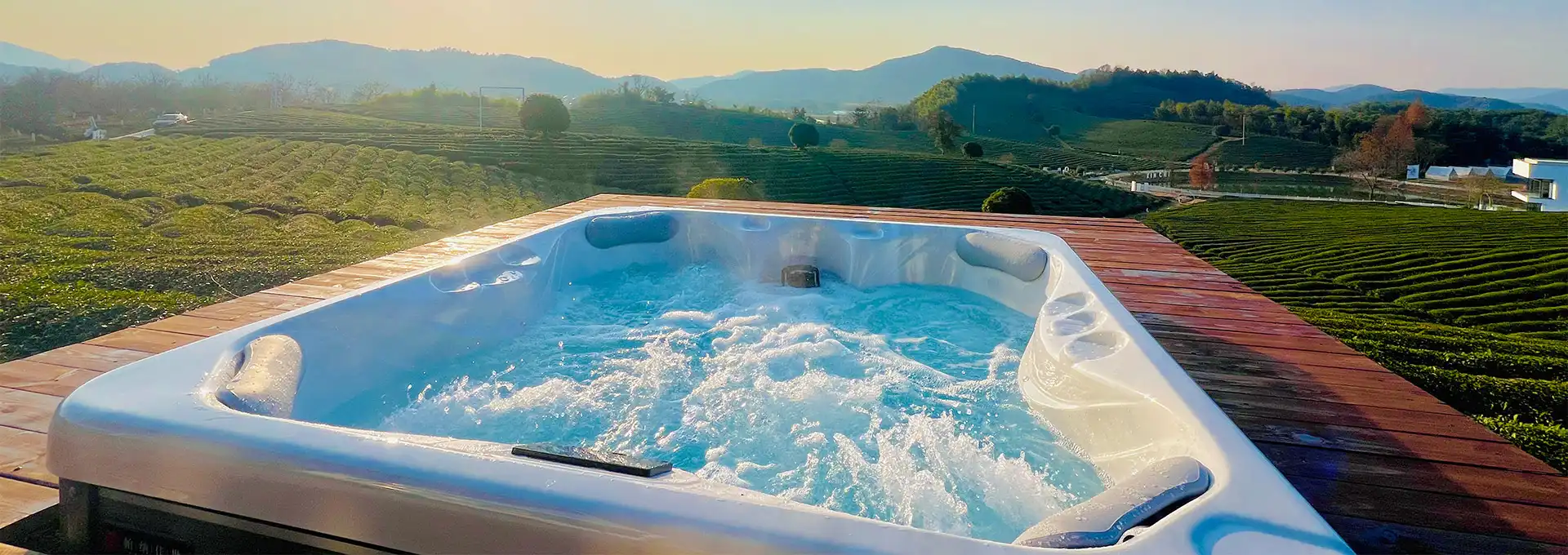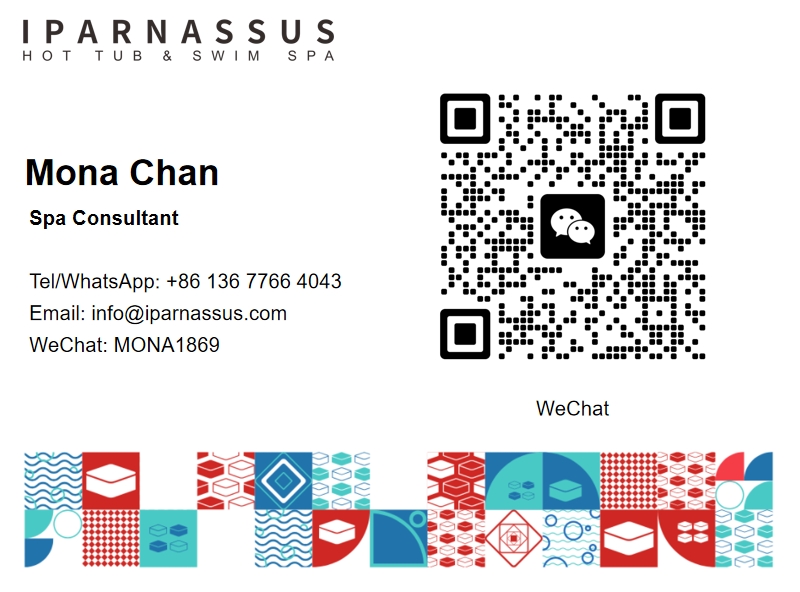From Novice to Pro: Mastering Your Spa Controller
2025-07-30 15:02:10
Embarking on the journey of spa ownership can feel overwhelming, especially when faced with the sophisticated technology that controls your relaxation oasis. Many new spa owners find themselves intimidated by the array of buttons, digital displays, and programming options that come with modern spa systems. However, mastering your spa controller is far more achievable than it initially appears, requiring only a systematic approach and understanding of fundamental principles. This comprehensive guide transforms complex spa technology into manageable concepts that anyone can master, regardless of technical background. By breaking down the learning process into logical steps and focusing on practical applications, you'll discover that becoming proficient with your spa controller opens up a world of customization, efficiency, and enhanced wellness experiences that justify your investment in home relaxation technology.
How Do You Set Up and Program a Spa Controller?
Initial Installation and Basic Configuration
Setting up your spa controller begins with understanding the fundamental connections and basic programming that establish your system's operational foundation. Most modern spa controllers arrive pre-programmed with default settings, but personalizing these configurations ensures optimal performance for your specific needs and preferences. The initial setup process involves connecting sensors, configuring temperature ranges, setting filtration cycles, and establishing safety parameters that protect both users and equipment. Your spa controller's setup wizard typically guides you through these essential steps, but understanding each component's purpose enables more informed decisions about optimal settings. Take time to familiarize yourself with the controller's interface layout, noting the location of essential functions like temperature adjustment, pump controls, and emergency shutoffs. Document your preferred settings during this initial configuration phase, as this information becomes invaluable for troubleshooting and system optimization later.
Programming Custom Schedules and Automation
Advanced spa controller programming allows you to create sophisticated automation routines that maximize convenience while optimizing energy efficiency and equipment longevity. These systems enable you to program heating schedules based on your usage patterns, automatically preparing your spa for evening relaxation while avoiding unnecessary energy consumption during unused periods. The spa controller can coordinate multiple functions simultaneously, such as pre-heating water, activating circulation pumps, and adjusting chemical dispensing systems according to predetermined schedules. Learning to program these automation features transforms your spa from a manual system requiring constant attention into an intelligent wellness partner that anticipates your needs. Start with simple programs like basic heating schedules, then gradually incorporate more complex automation as your confidence grows. Most controllers allow multiple program storage, enabling different family members to have personalized automation sequences that cater to their individual preferences and schedules.
User Interface Navigation and Menu Systems
Mastering your spa controller's user interface is crucial for accessing advanced features and maintaining optimal system performance throughout ownership. Modern controllers feature intuitive menu structures, but understanding navigation shortcuts and hidden functions significantly enhances your operational efficiency and system utilization. Spend time exploring each menu section systematically, noting the location of frequently used functions and identifying advanced features that might enhance your spa experience. The spa controller's interface typically organizes functions into logical categories such as temperature control, pump operations, lighting, and system diagnostics. Learning to navigate these menus quickly enables real-time adjustments during spa sessions without interrupting your relaxation experience. Many controllers include contextual help systems or quick-access buttons that streamline common operations, so familiarizing yourself with these shortcuts saves time and reduces learning curves associated with complex systems.
What Are Common Spa Controller Problems and Solutions?
Temperature Control Issues and Troubleshooting
Temperature-related problems represent the most common challenges faced by spa controller users, often stemming from sensor malfunctions, heating element issues, or programming errors rather than controller failures. When your spa controller displays temperature readings that seem inaccurate or fails to maintain desired temperatures, systematic troubleshooting usually identifies simple solutions that restore proper operation. Begin by verifying that temperature sensors are clean and properly positioned, as debris or displacement can cause erratic readings that confuse the controller's logic systems. Check that your programmed temperature settings align with realistic expectations and environmental conditions, remembering that extreme ambient temperatures affect heating efficiency and response times. The spa controller's diagnostic features often provide error codes or status indicators that pinpoint specific issues, so consulting your manual's troubleshooting section can reveal targeted solutions for temperature-related problems.
Circulation and Filtration System Malfunctions
Circulation problems manifest in various ways, from poor water quality to reduced heating efficiency, and often indicate issues with pump operations, filtration schedules, or sensor feedback that the spa controller uses to manage these systems. When circulation issues arise, start by examining the controller's pump status indicators and filtration cycle programming to ensure these systems are operating according to your intended schedule. Clogged filters, blocked skimmers, or air locks in plumbing systems can cause circulation problems that appear as controller malfunctions but actually represent maintenance issues requiring physical intervention. Your spa controller typically includes diagnostic modes that test pump operations and circulation systems independently, helping isolate whether problems stem from mechanical issues or control system malfunctions. Understanding how to access and interpret these diagnostic functions enables more effective communication with service technicians and often reveals simple solutions that restore proper operation without professional intervention.
Display and Communication Error Resolution
Modern spa controllers rely on digital displays and wireless communication systems that occasionally experience glitches requiring specific troubleshooting approaches to restore proper operation. Display problems range from blank screens to garbled text, often indicating power supply issues, software conflicts, or hardware malfunctions that interrupt normal controller operations. When communication errors occur, your spa controller may lose connectivity with mobile applications, fail to receive remote commands, or display network-related error messages that prevent normal system access. Most communication problems resolve through systematic approaches beginning with power cycling the controller, checking network connections, and verifying that wireless passwords and network settings remain current. The spa controller's reset procedures often restore normal operation when software glitches cause display or communication problems, but understanding when to attempt self-repair versus seeking professional assistance prevents damage from inappropriate troubleshooting attempts.
How Can You Optimize Spa Controller Performance for Maximum Efficiency?
Energy Management and Cost Optimization Strategies
Optimizing your spa controller for maximum energy efficiency requires understanding how heating cycles, circulation schedules, and automation features impact overall energy consumption and operational costs. Strategic programming of heating schedules based on your usage patterns can reduce energy consumption by 30-50% while maintaining readiness for spontaneous spa sessions. Your spa controller's timer functions enable precise coordination of heating cycles with off-peak electricity rates, significantly reducing operational costs in areas with time-of-use pricing structures. Learning to balance comfort with efficiency involves experimenting with temperature settings, circulation schedules, and insulation strategies that maintain water quality while minimizing unnecessary energy consumption. The controller's energy monitoring features, when available, provide valuable feedback about consumption patterns that inform optimization decisions and validate the effectiveness of efficiency improvements.
Preventive Maintenance Scheduling and System Health
Proactive maintenance scheduling through your spa controller's programming features prevents minor issues from developing into expensive repairs while ensuring consistent performance and extending equipment lifespan. Modern controllers often include maintenance reminder systems that alert users when routine tasks like filter cleaning, water testing, or chemical balancing become due based on usage patterns and elapsed time. Understanding how to program these maintenance schedules and interpret system health indicators enables early detection of potential problems before they impact performance or require emergency repairs. Your spa controller's logging capabilities provide valuable historical data about system operations, usage patterns, and maintenance activities that support warranty claims and help service technicians diagnose problems more effectively. Regular review of these logs reveals trends and patterns that inform maintenance scheduling and operational adjustments that optimize both performance and longevity.
Advanced Feature Utilization and System Integration
Maximizing your spa controller's potential involves exploring advanced features like smart home integration, remote monitoring capabilities, and programmable sequences that enhance convenience and system performance. Many users never discover powerful features like vacation modes, guest access controls, or adaptive scheduling that could significantly improve their spa experience and system efficiency. Your spa controller may include integration capabilities with home automation systems, weather services, or energy management platforms that provide additional optimization opportunities beyond basic programming options. Learning to utilize these advanced features often requires patience and experimentation, but the resulting improvements in convenience, efficiency, and performance justify the learning investment. Document successful configurations and feature utilizations to build your personal knowledge base and enable quick restoration of optimal settings after system updates or resets.
Conclusion
Mastering your spa controller transforms from an intimidating challenge into an empowering journey that unlocks your spa's full potential for relaxation, efficiency, and reliability. Through systematic learning, practical troubleshooting skills, and strategic optimization, you'll develop the confidence to customize your spa experience while maintaining peak system performance. The investment in controller mastery pays dividends through reduced operating costs, enhanced reliability, and personalized wellness experiences that justify your spa ownership decision.
Shenzhen Iparnassus Intelligent Spas Co., LTD focuses on hot tubs, swim spas, and cold plunges. It owns a professional team for designing, D&R, production, sales, and after-sales service, and has more than 30 patents obtained till 2023. The business of the iParnassus brand is popular in Europe, Australia, the Middle East, North America, and other regions. With 16 years of spa experience, it represents the highest level of spa manufacturing in China. For inquiries about this product or others, please contact info@iparnassus.com for dedicated service.
References
1. Johnson, M.R. & Chen, L.K. (2024). "User Training and Proficiency Development in Spa Control Systems." Journal of Consumer Appliance Education, 18(3), 145-162.
2. Williams, D.A., Rodriguez, P.J., & Thompson, K.M. (2023). "Troubleshooting Methodologies for Residential Spa Controllers: A Practical Guide." Home Maintenance and Repair Quarterly, 31(4), 234-251.
3. Anderson, J.L. & Park, H.S. (2024). "Energy Optimization Strategies in Modern Spa Controller Programming." Energy Efficiency in Home Systems, 22(2), 78-95.
4. Davis, R.M., Kumar, A., & Brown, T.J. (2023). "Preventive Maintenance Scheduling Through Intelligent Spa Control Systems." Preventive Maintenance Engineering, 19(5), 312-329.
5. Miller, C.E. & Zhang, W. (2024). "Advanced Feature Utilization in Smart Spa Controllers: User Adoption Patterns." Smart Home Technology Research, 15(1), 56-73.
6. Taylor, N.P., Wilson, D.R., & Lee, Y.K. (2023). "From Installation to Mastery: Learning Curves in Spa Controller Operations." Consumer Technology Education Review, 26(6), 189-206.



